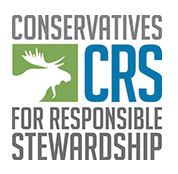For anyone who cares about safeguarding our environment, many of President Trump’s past statements have been worrisome, as have the people he put in charge of transitioning to a new administration. This makes it particularly important to have thoughtful, stewardship-minded leaders heading up the Department of Interior and EPA.
Trump’s nominee for Secretary of Interior, Congressman Ryan Zinke, is worthy of support. He is an advocate for America’s public lands who opposes efforts to turn those lands over to states and special interests. He boycotted the GOP convention because the platform was anti-public land. Zinke clearly meets the threshold of someone who cares about safeguarding our natural heritage.
The same is not the case with Trump’s nominee for EPA Administrator, Scott Pruitt. As Attorney General of Oklahoma Pruitt amassed a long record of opposing EPA and the environmental laws the agency is responsible for enforcing, including suing the agency 13 times.
Moreover, Pruitt always seems to come down on the side of the polluter rather than the environment and the broader public interest. This tendency tracks closely with his ties to regulated industries, including donations to his campaigns and other endeavors. Putting Pruitt in charge of EPA would be akin to putting a fox in charge of a henhouse.
For those reasons, Conservatives for Responsible Stewardship supports the Ryan Zinke for Secretary of Interior and strongly opposes the nomination of Scott Pruitt to head EPA. The Pruitt nomination falls short of the standard set by past Republican presidents to nominate EPA heads who believe in the agency’s mission and are committed to its important work.
Background
EPA is a Republican invention born of necessity. Richard Nixon created the agency in response to the severe air and water pollution problems of the early 1970s.
People tend to forget what things were like before EPA.
Smog choked many of our cities, and rivers across the nation functioned as open sewers that reeked of sewage and industrial waste. Ohio’s Cuyahoga River, which infamously caught on fire, was described by TIME as “Chocolate-brown, oily, bubbling with subsurface gases, it oozes rather than flows.” Lake Erie was little more than a cesspool, so polluted that each square yard of the lake bottom writhed with 30,000 sludge worms.
The America the Beautiful of the Katharine Bates poem had become a comedic punch line, and the health, prosperity and quality of life of Americans was suffering. Previous federal, state and local laws had proved ineffective at stemming the tide of pollution that fouled our air and water.
Nixon appointed William Ruckelshaus as the first EPA administrator. He was followed by Russell Train. Both were effective leaders who proved instrumental in shaping the agency and implementing many of the nation’s landmark environmental laws such as the Clean Air Act and Clean Water Act.
President Reagan, after his first appointee didn’t work out, asked Ruckelshaus to head the EPA again and restore its effectiveness. Ruckelshaus was followed by Lee Thomas, who barred the use of lead in gasoline and helped Reagan push through the Montreal Protocol treaty that began phasing out ozone depleting chemicals.
George H.W. Bush appointed William K. Reilly, who made strengthening the role of science a priority at EPA. He played a major role in negotiating and securing passage of the 1990 Clean Air Act Amendments. That legislation successfully addressed acid rain by establishing a cap-and-trade system to reduce sulfur dioxide pollution, and took additional steps to phase out ozone depleting chemicals.
George W. Bush tapped former New Jersey governor Christine Todd Whitman to head EPA. During her tenure she fought hard for scientifically supported pollution standards, often at odds with the pro-industry advocacy of Vice President Dick Cheney. After Whitman eventually resigned, Bush appointed former Utah governor Mike Leavitt to lead the agency.
Leavitt pledged to lead the country towards the “most productive period of air-quality improvement in American history.” He favored cap-and-trade systems to address pollution and implemented the Interstate Air Quality Rule to reduce smog-producing ozone and other air pollutants.
When Leavitt was chosen to lead the Department of Health and Human Services, Bush appointed Stephen L. Johnson as EPA administrator. Citing the Supreme Court’s Massachusetts v. EPA decision, Johnson recommended that the Bush Administration to issue an endangerment finding on greenhouse gas pollution and had formulated a plan to regulate carbon dioxide emissions under the Clean Air Act.
None of these GOP EPA heads were environmental group favorites, some were vehemently opposed, but any objective review will conclude that each of these administrators believed in the agency, accepted scientific findings, and worked to improve the quality of our environment.
The American people deserve no less from the Trump Administration. As President Nixon said, clear air and clean water should be “the birthright of every American,” and poll after poll shows that Republicans, Independents, and Democrats alike expect no less.
That birthright will be severely threatened if Scott Pruitt is at the helm of the agency responsible for safeguarding it.
EPA is an easy target for extremists because it exists to set rules and standards. This draws the ire of those whose objectives are encumbered in any way by the existence of such limits. But history has proven that such controls are necessary to protect our health and quality of life against mankind’s lesser instincts.
Conservatism has always called for prudent checks on mankind’s material will and appetite, and it would be folly to turn the EPA over to those who would render it impotent to exploit our life-sustaining environment for material gain.
Past Republican presidents understood this. They foresaw that EPA would not be able to function if its leader had an anti-environment axe to grind and disdain for the agency’s purpose. If this is lost on President Trump, then the Senate has a duty to send him a clear reminder.

